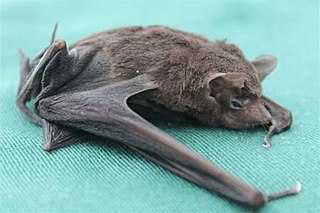 W
WThe Anatolian boar is a subspecies of wild boar endemic to Turkey, Levant, Israel and Transcaucasia. It is likely to be one of the ancestors of today's domestic pigs.
 W
WDesmarest's spiny pocket mouse is a species of rodent in the family Heteromyidae. It is found in Colombia, Costa Rica, El Salvador, Guatemala, Honduras, Mexico, Nicaragua, and Panama.
 W
WThe giant otter shrew is a semiaquatic, carnivorous afrotherian mammal. It is found in the main rainforest block of central Africa from Nigeria to Zambia, with a few isolated populations in Kenya and Uganda. It lives in streams, wetlands and slow flowing larger rivers. It is the only species in the genus Potamogale. Otter shrews are most closely related to the tenrecs of Madagascar.
 W
WHeuglin's gazelle, also known as the Eritrean gazelle, is a species of gazelle found east of the Nile River in Eritrea, Ethiopia and Sudan. It was considered a subspecies of the red-fronted gazelle or conspecific with Thomson's gazelle and Mongalla gazelle by some authors in the past. This small gazelle stands nearly 67 cm (26 in) at the shoulder and weighs between 15 and 35 kg. The coat is dark reddish brown with a dark reddish stripe on the flanks, except for the underparts and the rump which are white. Horns, present in both sexes, measure 15 to 35 cm in length.
 W
WThe lesser long-tongued bat, also called the lesser long-tailed bat, is a bat species from South America.
 W
WThe Nicobar treeshrew is a treeshrew species within the Tupaiidae. It is endemic to the Nicobar Islands where it inhabits the islands' rain forests. It is threatened by habitat loss.
 W
WThe sagebrush vole is a tiny vole found in western North America. This is the only member of genus Lemmiscus.
 W
WThe Seychelles sheath-tailed bat is a sac-winged bat found in the central granitic islands of the Seychelles. It is an insectivorous bat, feeding primarily in forest clearings at night and roosting in communal roosts by day. Although previously abundant across the island group, it now only occurs on three islands. Its numbers have been declining to such an extent that the International Union for Conservation of Nature has listed it as being critically endangered. Increases in the cultivation of coconut palms in plantations, and the introduction of alien plant species, seem to have reduced the availability of insect food.
 W
WThe Mexican spiny pocket mouse is a species of rodent in the family Heteromyidae. It is native to Mexico and Texas in the United States where it is found in dry, scrubby habitats. The IUCN has assessed it as being of "least concern". It was formerly placed in the genus Liomys, which is now recognized to be paraphyletic and has been subsumed into Heteromys.
 W
WHeterohyrax brucei, more commonly known as the yellow-spotted rock hyrax or bush hyrax, is a species of mammal in the family Procaviidae. It is found in Angola, Botswana, Burundi, Democratic Republic of the Congo, Southern Egypt, Eritrea, Ethiopia, Kenya, Malawi, Mozambique, Rwanda, Somalia, Northern South Africa, South Sudan, Sudan, Tanzania, Uganda, Zambia, and Zimbabwe. Its natural habitats are dry savanna and rocky areas. Hyrax comes from the Greek word ὕραξ, or shrew-mouse.
 W
WThe Zanzibar red colobus is a species of red colobus monkey endemic to Unguja, the main island of the Zanzibar Archipelago, off the coast of Tanzania. It is also known as Kirk's red colobus after Sir John Kirk, the British Resident of Zanzibar who first brought it to the attention of zoological science. It is now classified as an endangered species and in the mid-1990s was adopted as the flagship species for conservation in Zanzibar. The population is still decreasing, and conservationists are attempting to work with the local government to devise a proper, effective strategy to protect the population and habitat. Challenges include the species' habitat, which is limited to the archipelago. The species has been reclassified three times; it was previously in the genus Colobus, then in the genus Procolobus, and later in the genus Piliocolobus.